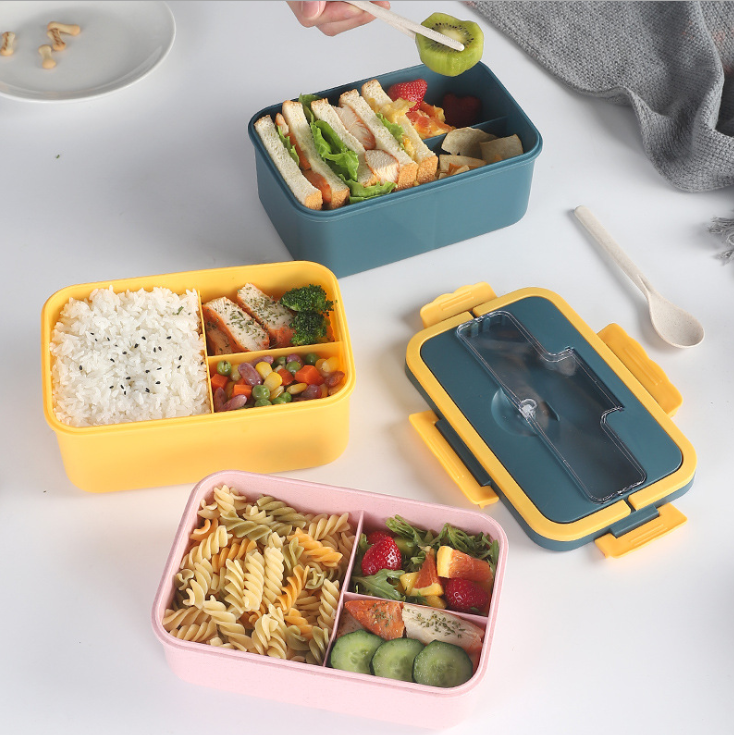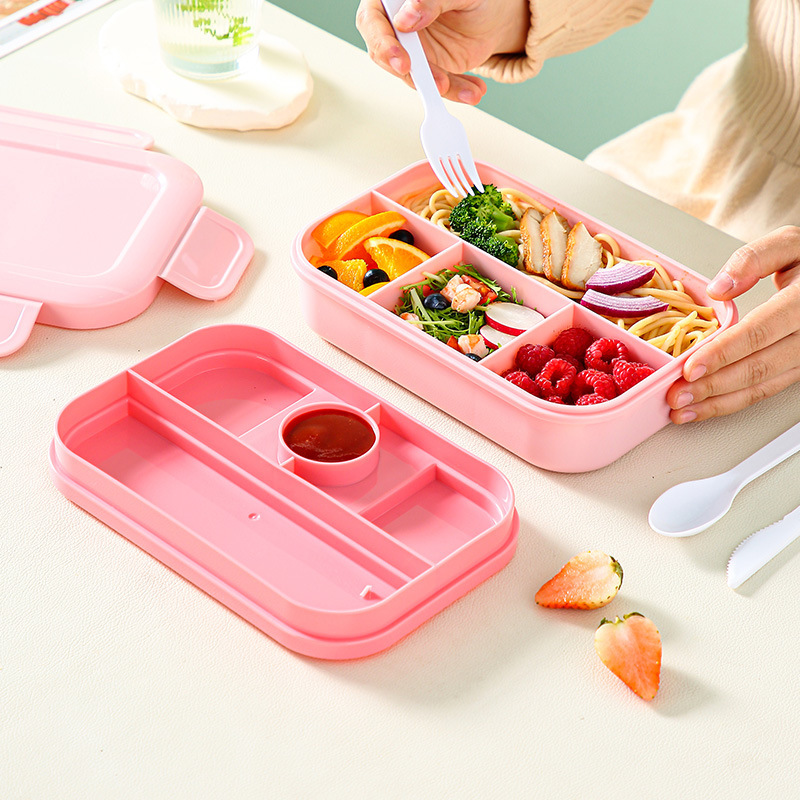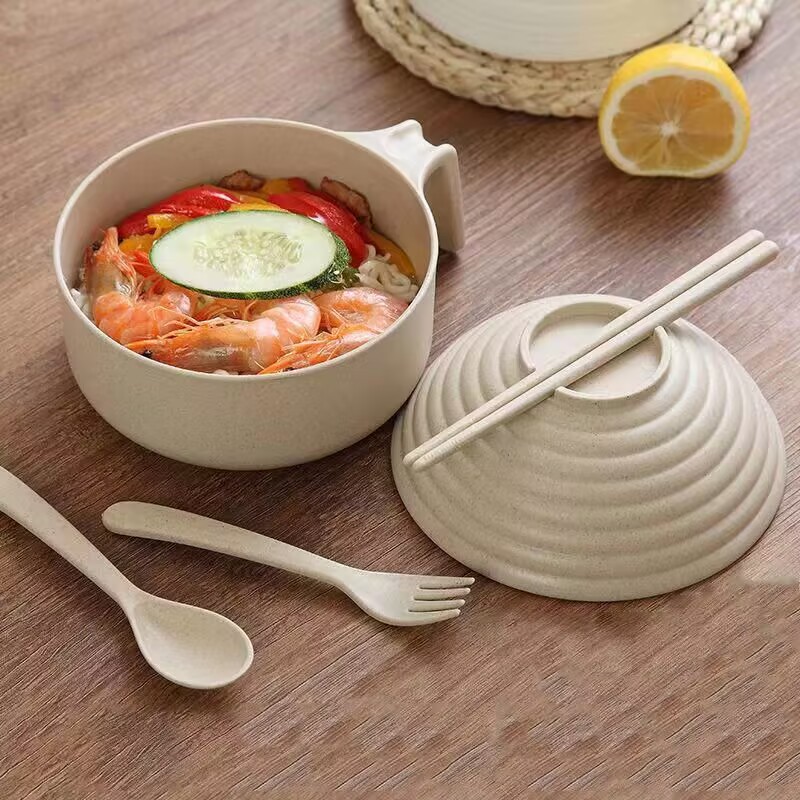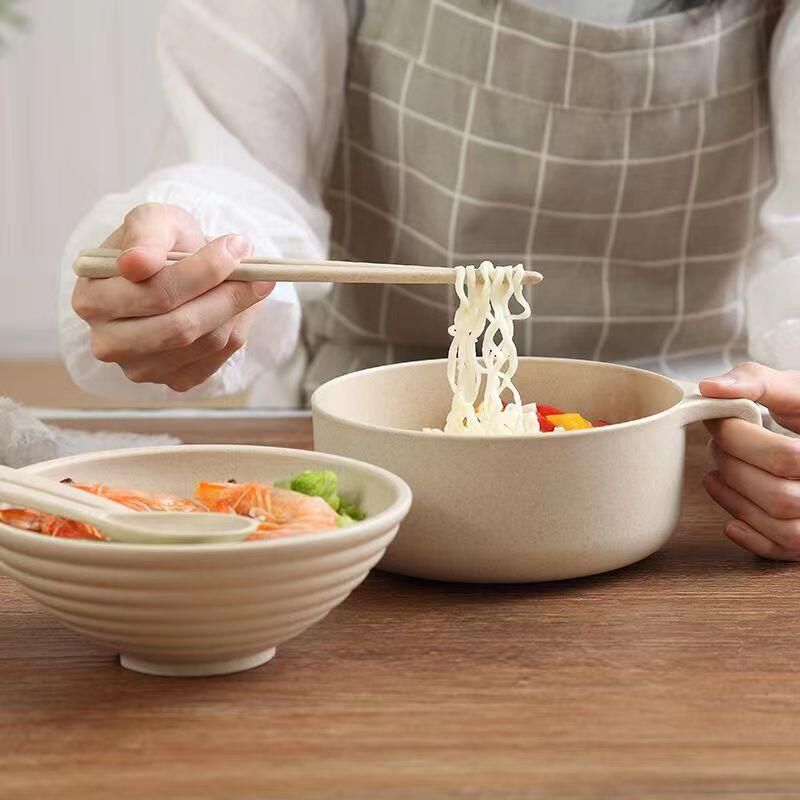At a time when the “dual carbon” goal is being promoted and consumers are becoming more aware of their health, the disadvantages of using traditional plastic tableware are becoming increasingly prominent. A new type of tableware with natural wheat straw as the core raw material, wheat tableware, is quietly becoming a new favorite in the market. What kind of “outstanding features” does this tableware, which is both healthy, environmentally friendly and practical, have? Let us unveil its mystery together.
The core raw material of wheat tableware comes from agricultural production waste – wheat straw. In the past, wheat straw was often difficult to handle, or was burned to pollute the environment, or piled up and rotted to affect the ecology. Today, through advanced physical and biological processing technologies, these waste straws have been transformed into high-quality materials for making tableware. During the production process, only a small amount of safety additives such as food-grade resins are added, and no harmful chemicals are used to ensure that the tableware has healthy properties from the source.

In terms of health and safety, wheat tableware performs well. According to professional testing, it does not contain harmful substances such as bisphenol A and heavy metals, and does not release toxic substances when holding high-temperature food. Whether it is for daily dining or for takeout packaging, consumers do not need to worry about the health risks brought by the contact between tableware and food. In contrast, some traditional plastic tableware is easy to deform and release harmful ingredients at high temperatures, while ceramic and glass tableware are prone to breakage and scratching. Wheat tableware undoubtedly provides consumers with a more secure choice.
Environmental performance is a highlight of wheat tableware. Since the main raw material comes from natural straw, the product can be quickly degraded in the natural environment after it is discarded. The degradation cycle is only a few months to a year, which is much shorter than the hundreds of years of degradation time of plastic tableware. If composting is carried out, it can also be converted into organic fertilizer and return to the soil, truly realizing “taking from nature and returning to nature”, effectively reducing white pollution, and helping to build a circular economy system.

From a practical point of view, wheat tableware is also excellent. It has a tough texture and good drop resistance. It can withstand a certain degree of extrusion and collision. It is not easy to break even if it falls from a certain height. It is especially suitable for families with children and takeout scenarios. In addition, it also has excellent heat resistance and can withstand high temperatures of around 120°C. Whether it is used to hold hot soup or hot rice just out of the pot, or to heat it in a microwave oven, it can easily cope with it. At the same time, wheat tableware has a smooth surface, is easy to clean, and is not prone to residual stains and bacteria, making daily use worry-free and labor-saving. 
At present, wheat tableware has been widely used in catering, take-out, family and other scenarios. Many catering companies have introduced wheat tableware to replace traditional disposable tableware, which not only meets consumers’ demand for health and environmental protection, but also enhances the brand’s green image; in the family, more and more consumers choose wheat tableware as daily dining tools to contribute to the health of their families and environmental protection.

With the continuous advancement of technology and the continuous promotion of the market, wheat tableware is leading the green transformation of the tableware industry with its perfect combination of health, environmental protection and practicality. I believe that in the future, it will enter the lives of more people and play a greater role in protecting the earth’s environment and human health.
Post time: Jul-07-2025











